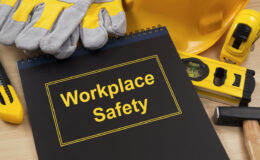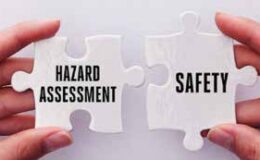By Travis Halsted, Loss Control Consultant
Each year, millions of workers suffer workplace lacerations that could be prevented. From the use of improper tools, moving material unsafely, and inadequate personal protective equipment, employees suffer a great deal of avoidable injuries.
 Through a review of the lacerations within MTMIC’s loss run history, the issue of laceration injuries is very apparent. Since 2009, 2,091, or 25% of the total 8,536 injury claims reported have been lacerations. Of those 2,091 laceration claims, 1,508, or 72%, were reported to have taken place on the hand (fingers, thumbs) of the injured employee.
Through a review of the lacerations within MTMIC’s loss run history, the issue of laceration injuries is very apparent. Since 2009, 2,091, or 25% of the total 8,536 injury claims reported have been lacerations. Of those 2,091 laceration claims, 1,508, or 72%, were reported to have taken place on the hand (fingers, thumbs) of the injured employee.
Monetarily speaking, lacerations account for $4,401,735, or 10%, of the total $42,654,333 spent on workplace injuries by MTMIC since 2009. This percentage is only surpassed by fractures (12%) and strains (46%). As the numbers point to the fact that lacerations are not only one of the most reported workplace injuries, but also one of the most costly, it is vital to identify some measures to reduce the likelihood of continued lacerations.
While many people assume that personal protective equipment is the only answer, in fact, it should be the last measure taken. First and foremost, one must identify any administrative or engineering controls that can be put in place. Administrative controls can include properly training your employees on the hazards that they will be working with and how to avoid those hazards, as well as conducting audits on the items put in place. Ensure that the training not only covers the hazards being faced, but also how you as their employer are taking steps to protect them and what those steps are. By giving them the knowledge of what the hazard is, how to protect themselves, and what you are doing to protect them, they may respect the dangers of the potential hazard even more. Through a strict and thorough safety training an employee will know that you take the laceration hazards seriously, and so should they. Also within the administrative controls are the use of audits. Audits can be helpful in maintaining proper training schedules, ensuring employees compliance with the training, and inspecting any engineering controls in place.
Engineering controls should be the next step of the process of reducing lacerations. As the statistics above point out that the majority of MTMIC laceration claims happen on the hands, it is a great place to start. Engineering controls can assist in handling of materials, specific tools and even fixtures to hold items that are being worked on or moved. When developing an engineering control it is vital to include the employee that would work with the items in the design process to proactively identify any discrepancies in the design before implementing the tool.
One of the most common sources of cuts and lacerations is the use of knives and other cutting tools. When identifying procedures that involve these type of tools, aim to address these key points.
- Use the proper tool for the job.
- Replace blades when they become dull; use caution when disposing of used blades (e.g., use approved sharps container or wrap the cutting edge with heavy tape).
- Inspect tools prior to use.
- Make sure the path of the cut is clear, and keep the non-cutting hand out of the path of the cut.
- Keep work area clear.
- Never use a cutting blade as a screwdriver, pry bar or chisel.
- Keep tool under control at all times.
- When appropriate, use rounded tip cutting blades rather than pointed tip blades.
- Maintain proper storage or use a separate drawer for sharp cutting tools.
- Use a sharp blade; a dull blade requires greater force, increasing potential hazards.
- Stand in a well-balanced position.
- Pull the blade toward you when cutting on a horizontal surface.
- Don’t leave exposed blades unattended; use self-retracting cutting blades.
- Keep the item you are cutting secured; don’t hold work in hand while cutting.
- Keep cutting tools in a closed position or covered with a protective sheath.
- Wear proper safety gear; eyewear, gloves, sleeves.
With a thorough analysis of your safety programs and some proactive planning you can develop a plan that will not only eliminate laceration injuries, but also eliminate a great deal of other injuries as well. If you need any ideas on administrative, engineering, or personal protective equipment please contact a member of our loss control team.





